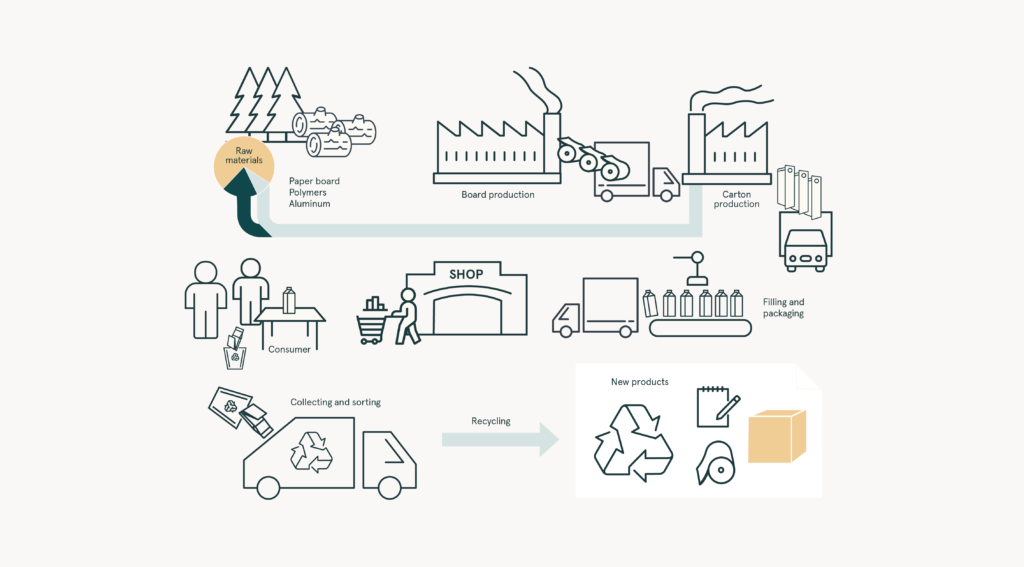Carbon Footprint
Life cycle analyses (LCA) show that the Pure-Pak® carton significantly outperforms other packaging, particularly in terms of greenhouse gas emissions.
Elopak recently conducted an LCA for beverage packaging on the North American market, once again proving beverage cartons to perform better than plastic bottles in a number of environmental impact categories.
What is environmental footprinting?
Environmental Footprinting is a way of quantifying the impact a certain product has on the environment. It looks at the whole value chain from the sourcing of raw materials, via our own and suppliers’ production processes, to our customers, retail and consumers and finally end-of-life. In each step, there is an environmental impact.
In 2019, a Life Cycle Assessment (LCA) was done by the Institute for Energy and Environmental Research Heidelberg (IFEU) in Germany. Results prove that beverage cartons are ecologically advantageous compared to single-use PET bottles and reusable glass bottles for packaging of milk and juice in the German market.
Further, a study from 2021, an LCA was carried out by Anthesis Ltd, demonstrating that the average Pure-Pak(R) carton presents a lower carbon footprint than a typical HDPE or PET bottle for milk and juice in the North American market.
In Elopak we have an internal cradle to gate calculation tool called “DEEP – Dynamic Elopak Environmental Performance”. It considers all emissions connected to the production of all raw materials. In addition, DEEP covers Elopak’s own operations including final conversion and all transportation up to the delivery to customers’ gate. By using DEEP it is possible to find the total cradle to gate emission for a specific Elopak carton configuration.
Emission reduction
Our carton is already a low emission alternative. However, Elopak continuously works to further lower the footprint through weight, waste and plastic reduction, renewable materials, production and transport efficiencies.
